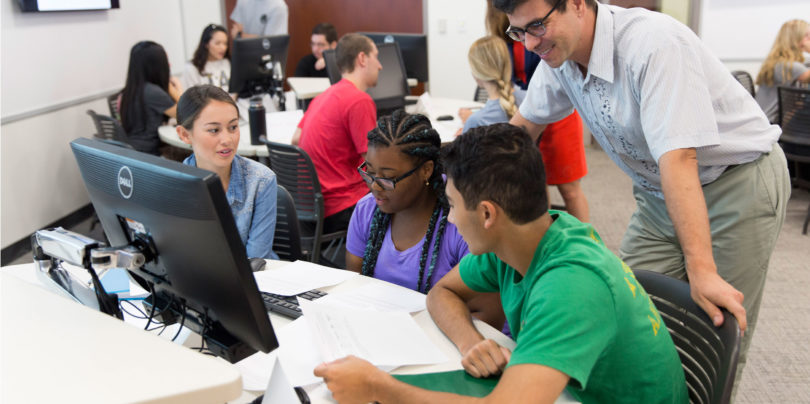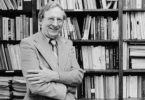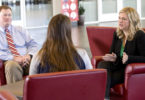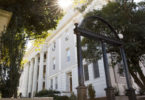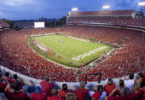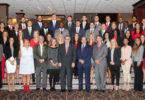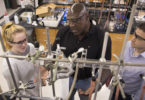Alli Replogle walked into the University of Georgia’s new Science Learning Center Thursday and spun around, checking out the 122,500-square-foot building before she headed up the stairs for her biochemistry class, one of two that were the first ever for the center.
“I’m excited to have something like this on South Campus,” the senior majoring in exercise science said. “I’m excited to use this facility.”
With 33 laboratories, two 280-seat lecture halls and two classrooms designed for active learning, the $48 million building, which was supported by the Board of Regents of the University System of Georgia and funded by Gov. Nathan Deal and the Georgia General Assembly, will allow the growth of UGA’s STEM programs. Science, technology, engineering and mathematics have been on an upward trajectory in recent years, with the number of undergraduate degrees awarded in those fields increasing from 15 percent in 2011 to more than 20 percent in 2015.
“This is really awesome,” said Kaitlin McFarland, a third-year student majoring in math and computer science who said some of her classes were held in the poultry science building because of a lack of space. “I’m really pumped.”
While SCALE-UP classrooms (Student-Centered Active Learning Environment for Undergraduate Programs) are not a new concept at UGA, the Science Learning Center nearly doubles the number of locations on campus.
“The technology and space does change instruction,” said Paula Lemons, an associate professor of biochemistry and molecular biology who taught one of the first two classes in a SCALE-UP classroom at the new center Thursday. She integrated group work into her biochemistry lessons several years ago but said that lecture halls aren’t always ideal for the interaction. “I will take advantage of this space. The seating is such that students can easily talk to each other, share computer screens and see each other’s work.
“Moreover, whiteboard space is available all around the room,” she added. “In biochemistry, drawing is critical, so I will encourage students to use the whiteboards to draw structures and models for each other and revise those as a group.”
During the first class, Lemons’ students divided into groups to investigate their first “case,” a disease outbreak in Papua New Guinea from the 1950s that Lemons and co-teacher Artur Muszynski, an associate research scientist, used to demonstrate the concepts of whether a disease is infectious, genetic or environmental.
“This was about working together and interacting,” said Quinton Blount, a third-year chemistry major. “It’s very helpful, and I really understood the concepts.”
“With all the screens and the technology, it’s good for auditory learners and visual learners,” added his classmate, Caria Evans, who is also a third-year chemistry major. “I wish all classes could be like this.”
As students made their way to the next class, Andrew Sackellares, a second-year biological sciences student, peeked into labs and classrooms. He didn’t have a class in the Science Learning Center on Thursday, but he was excited to get the first look before his class on Friday.
“I like the labs. They are pretty cool, and the study rooms are incredible,” he said. “This place is awesome.”
— Camie Williams, Office of the Provost


